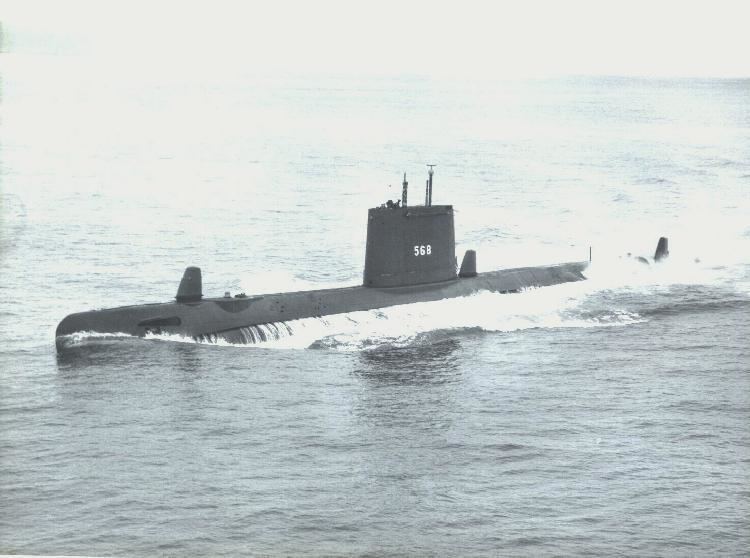 | ||
Passive Underwater Fire Control Feasibility System (or Study) (PUFFS) was a passive sonar system for submarines. It was designated AN/BQG-4 and was primarily equipped on United States Navy conventional submarines converted to GUPPY III or otherwise modernized in the 1960s. It was also equipped on the nuclear-powered USS Tullibee (SSN-597). A version known as "Micropuffs" was fitted on Oberon-class submarines for the Royal Australian Navy, and as Type 2041 on the Upholder-class for the British Royal Navy. This class still serves in the Royal Canadian Navy, where Micropuffs is known as BQG-501. The system was notable for three tall, fin-like domes topside, except on Micropuffs installations. The system was retained on several submarines transferred to foreign navies. It was associated with long-range passive detection of targets for the Mark 45 nuclear torpedo and other torpedoes as well. Most submarines backfitted with it were also lengthened 12-16 feet to accommodate additional electronics and plotting rooms. It was also planned for Thresher and Sturgeon-class nuclear submarines, but was not fitted on them except Micropuffs experimentally on Barb and Haddock. With the exception of the four Canadian Victoria-class submarines, all PUFFS-equipped submarines have been disposed of or preserved as museum ships.
